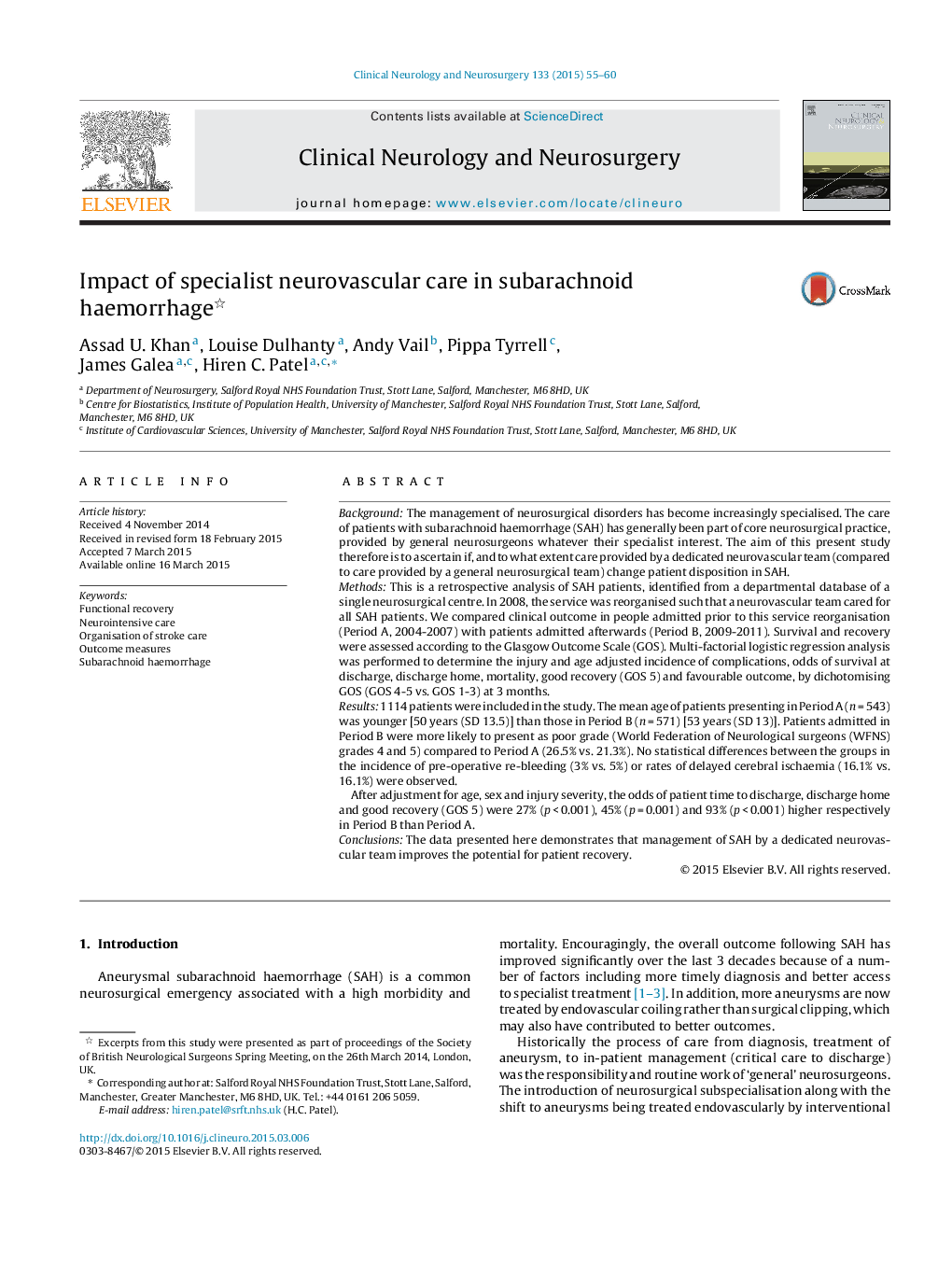| Article ID | Journal | Published Year | Pages | File Type |
|---|---|---|---|---|
| 3039880 | Clinical Neurology and Neurosurgery | 2015 | 6 Pages |
•We examine patient outcomes before and after a specialist neurovascular team.•Despite caring for elderly patients with worse injuries, outcomes improve.•The specialist team reduces time to treatment and in-hospital length of stay.•The specialist team improves the chances of a good patient recovery.
BackgroundThe management of neurosurgical disorders has become increasingly specialised. The care of patients with subarachnoid haemorrhage (SAH) has generally been part of core neurosurgical practice, provided by general neurosurgeons whatever their specialist interest. The aim of this present study therefore is to ascertain if, and to what extent care provided by a dedicated neurovascular team (compared to care provided by a general neurosurgical team) change patient disposition in SAH.MethodsThis is a retrospective analysis of SAH patients, identified from a departmental database of a single neurosurgical centre. In 2008, the service was reorganised such that a neurovascular team cared for all SAH patients. We compared clinical outcome in people admitted prior to this service reorganisation (Period A, 2004-2007) with patients admitted afterwards (Period B, 2009-2011). Survival and recovery were assessed according to the Glasgow Outcome Scale (GOS). Multi-factorial logistic regression analysis was performed to determine the injury and age adjusted incidence of complications, odds of survival at discharge, discharge home, mortality, good recovery (GOS 5) and favourable outcome, by dichotomising GOS (GOS 4-5 vs. GOS 1-3) at 3 months.Results1114 patients were included in the study. The mean age of patients presenting in Period A (n = 543) was younger [50 years (SD 13.5)] than those in Period B (n = 571) [53 years (SD 13)]. Patients admitted in Period B were more likely to present as poor grade (World Federation of Neurological surgeons (WFNS) grades 4 and 5) compared to Period A (26.5% vs. 21.3%). No statistical differences between the groups in the incidence of pre-operative re-bleeding (3% vs. 5%) or rates of delayed cerebral ischaemia (16.1% vs. 16.1%) were observed.After adjustment for age, sex and injury severity, the odds of patient time to discharge, discharge home and good recovery (GOS 5) were 27% (p < 0.001), 45% (p = 0.001) and 93% (p < 0.001) higher respectively in Period B than Period A.ConclusionsThe data presented here demonstrates that management of SAH by a dedicated neurovascular team improves the potential for patient recovery.
